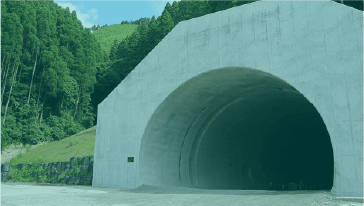
Amazing world of tunnels
 Learn more about tunnels that are indispensable to our lives!
Learn more about tunnels that are indispensable to our lives!
History of TunnelsWhen did it start?
When and how did the tunnels that support our lives start to develop?
Let's take a look back into history.
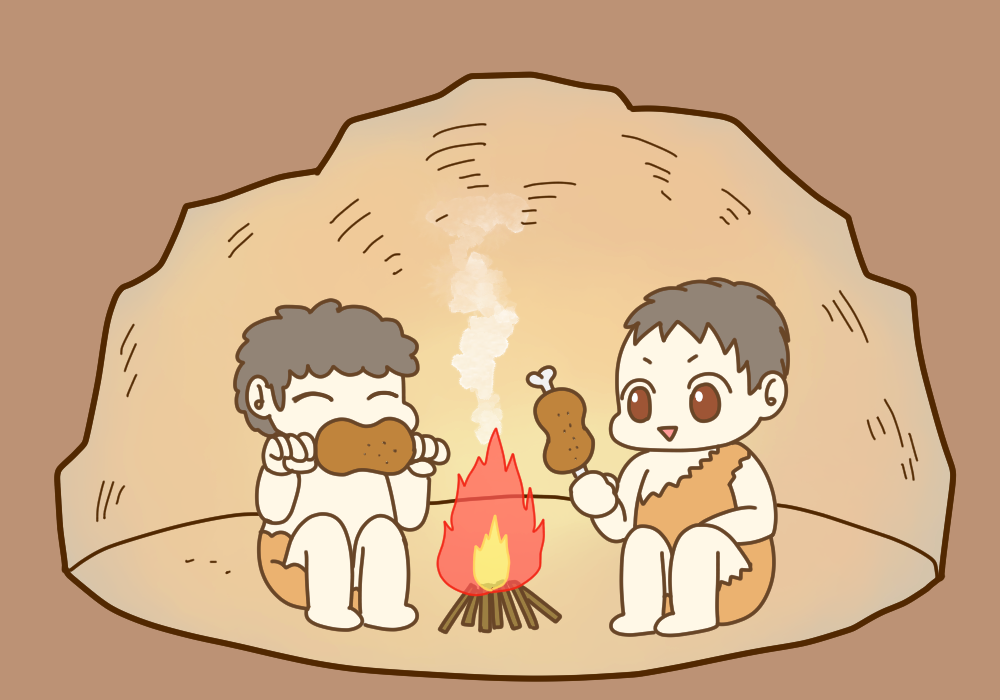
Caveman days
In ancient times, people lived in caves. They began digging tunnels to make their lives easier.
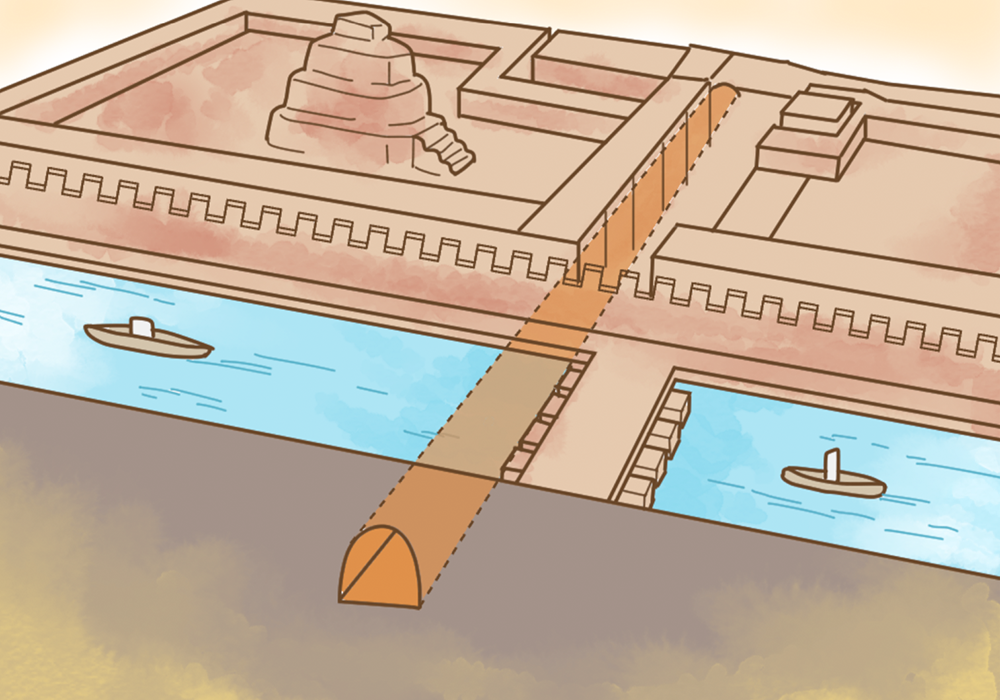
The world's first tunnel was built over 4,000 years ago
The first record of a tunnel is the underwater tunnel of the Euphrates River, connecting Babylonian palace and temple.
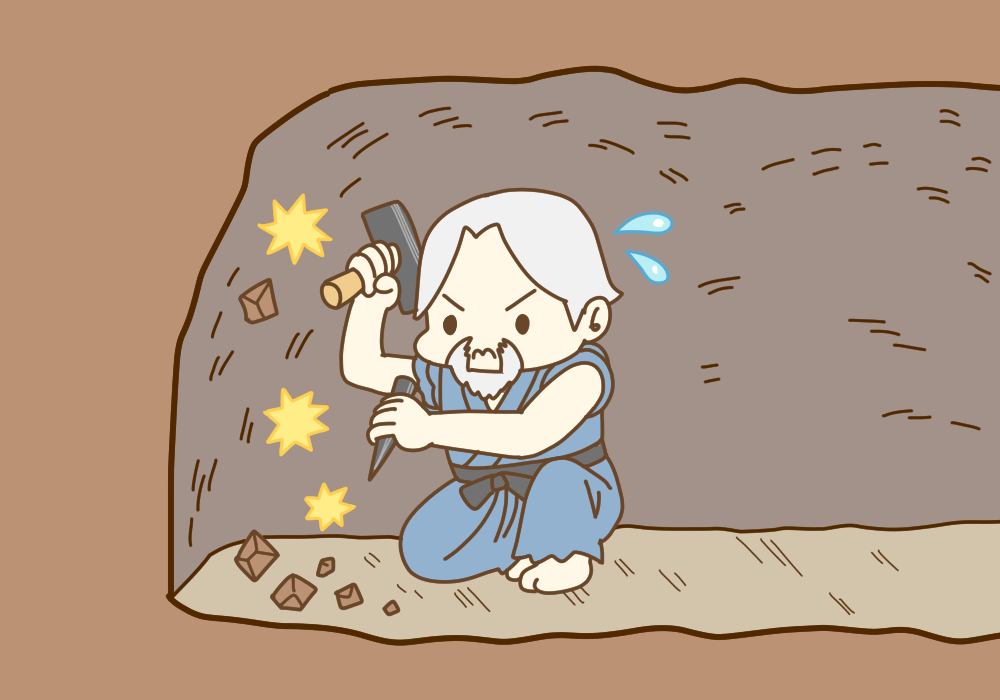
Japan's first road tunnel: the Blue Cave Tunnel
The Blue Cave Tunnel in Oita Prefecture is a 144-meter tunnel completed in 1764, using chisels for excavation taking approximately 30 years to complete.
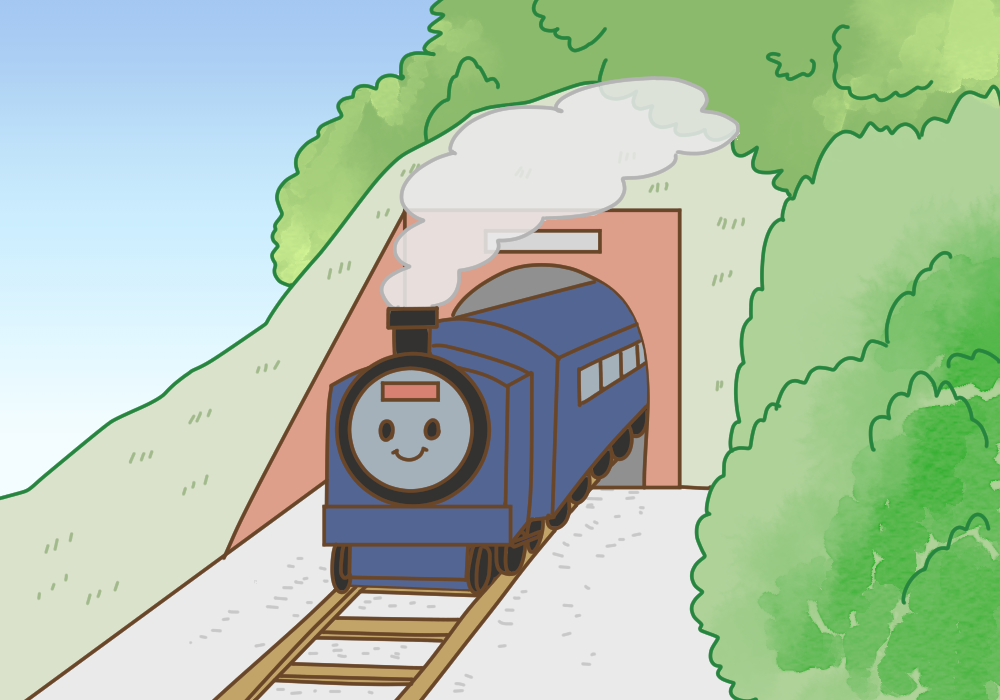
Japan's advanced technology for tunnels
In 1870, Japan's first railroad tunnel was opened between Osaka and Kobe. Technological development spurred construction of many tunnels.
The Role of TunnelsWhat are they used for?
Tunnels play a variety of roles in our daily lives, not only for roads and railroads,
but also other familiar purposes. More new ideas are coming up.
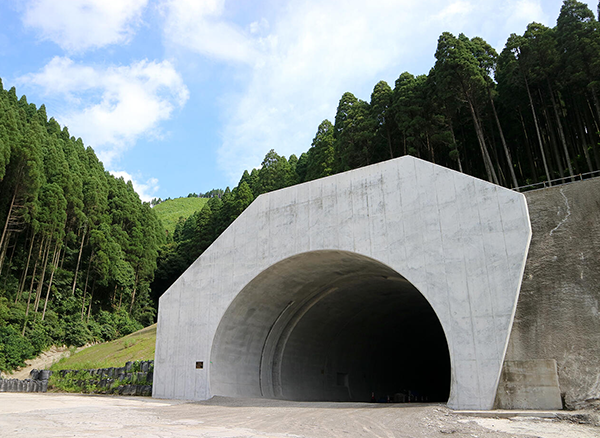
Traffic tunnels
Tunnels and underground passages for roads and railways enable quick and convenient travel.
※ Yoshinomoto Tunnel, Higashi-kyushu Expressway
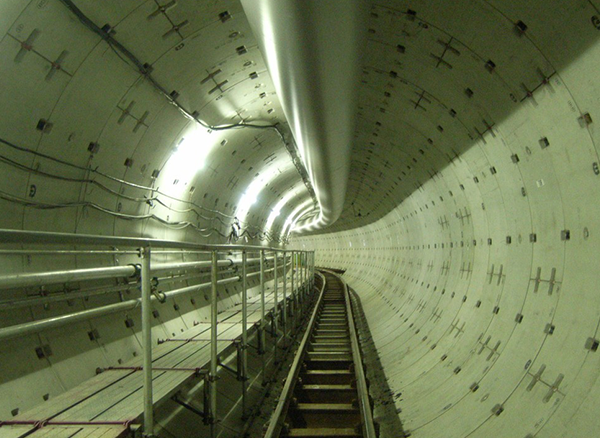
Utility tunnels
The tunnels for electricity, gas and water are also built underground.
※ Sewage under Niigta Airport
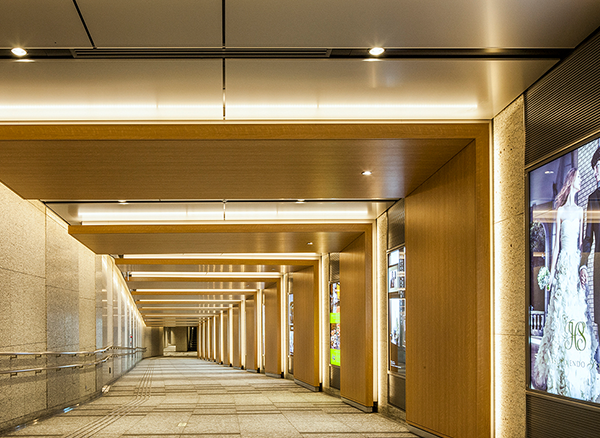
Underground malls and parking lots
Tunnel technologies are applied to underground shopping areas and parking lots.
※ Passage between Tozai Line Otemachi Station and Palace Hotel (Photo: Kawasumi・Kobayashi Kenji Photograph Office)
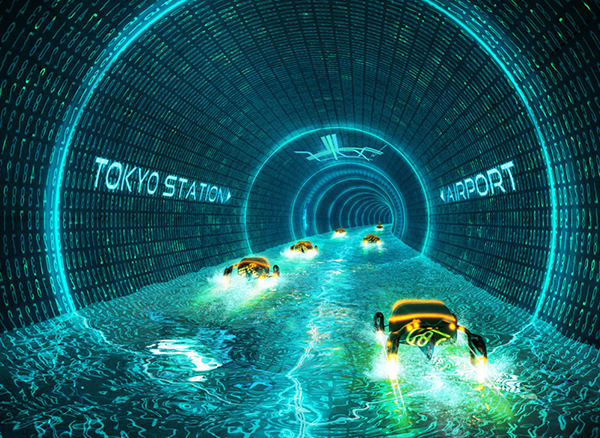
Future tunnel projects
A large-scale disaster-prevention underground tunnel for torrential rain events is planned in Tokyo, as a road for amphibious vehicles.
※ PR magazine Obayashi Quarterly vol. 56 (Feature: Revival of Aquapolis)
Tunnel MysteriesThe construction expert unravels the mysteries
How are tunnels made? Why don't they collapse?
Here are some answers to the mysteries.
Why are tunnels circular-shaped?
Because they’re stronger that way.
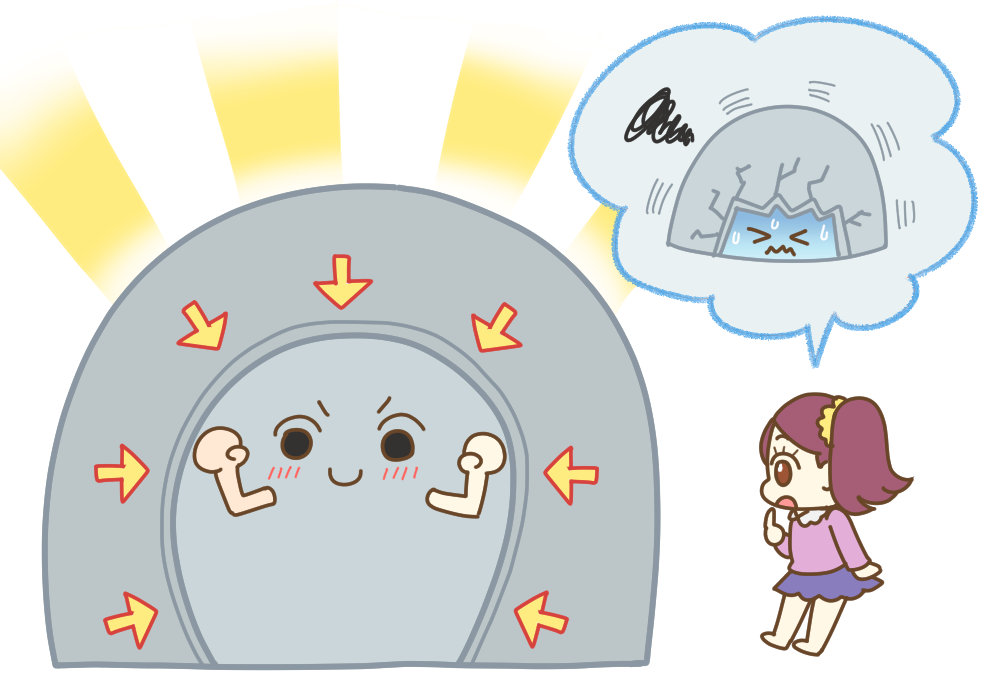
Tunnels are circular to take advantage of the characteristics of soil and rock. Soil and rock are resistant to crushing forces (compressive forces). By rounding the ceiling, the weight of the soil and rock from the top to are balanced over the entire tunnel, increasing its strength.
How do the workers dig holes in rock?
By using explosives.
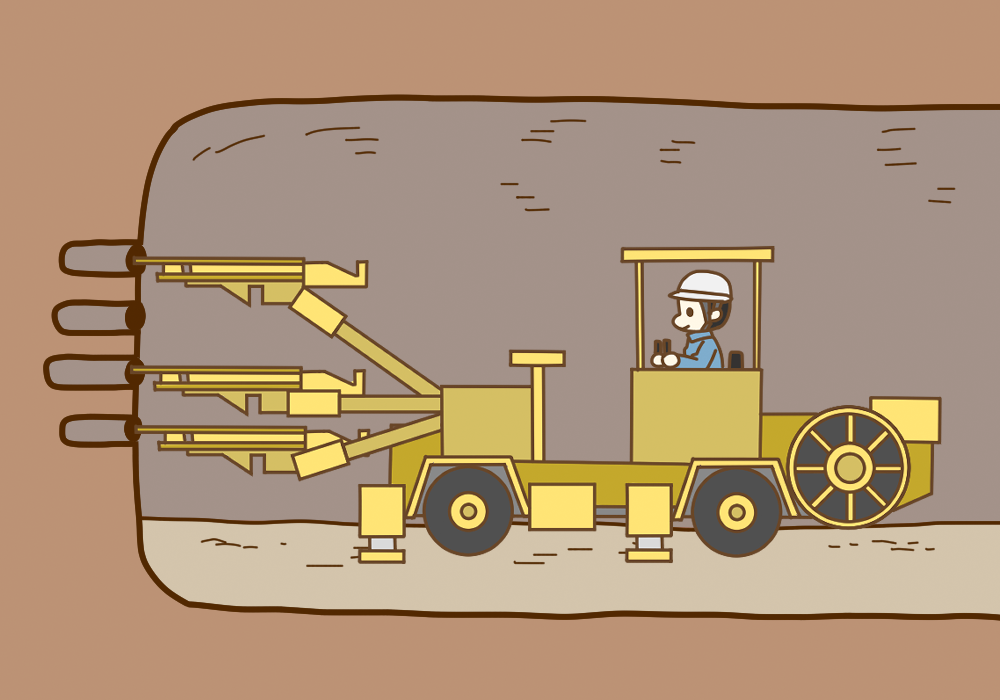
Explosives are used to dig through hard bedrock as found in mountains. Many small holes are drilled in the rock with a machine and filled with explosives. Then, from a distance, the explosives are ignited, breaking the rock into pieces. Only about 1 to 2 meters of progression is made in a single operation.
Why don’t the tunnels collapse?
Because we dig while reinforcing them.
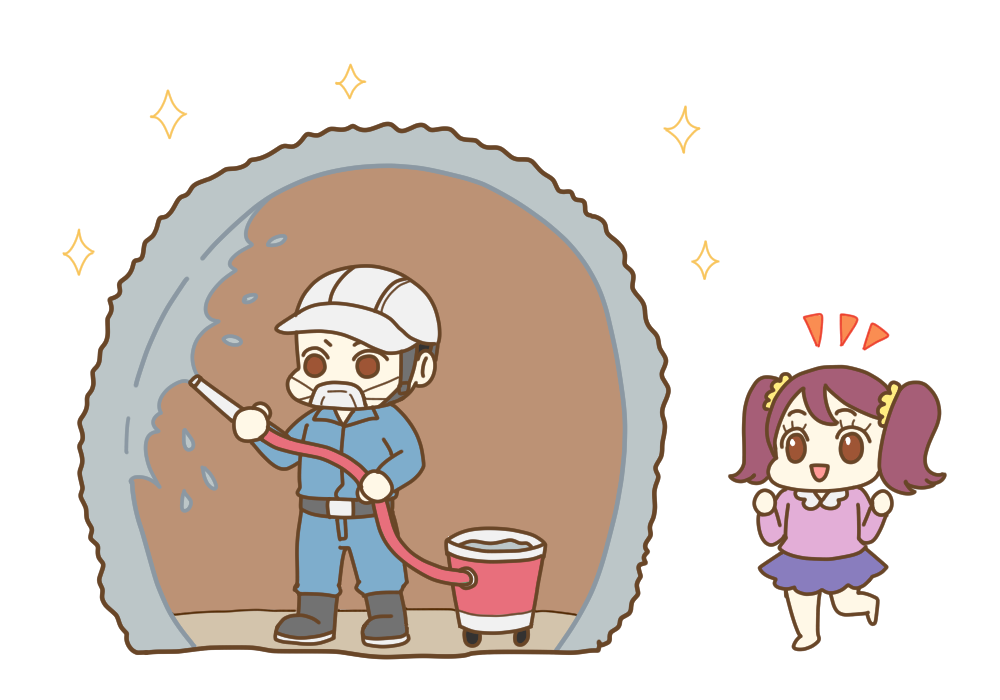
Once a tunnel is dug, the walls are sprayed with concrete and immediately hardened. Also, steel frames called steel support and steel rods called rock bolts are used to reinforce the tunnel so that it can be dug without collapsing.
How can they be finished as designed?
By using a lot of different techniques.
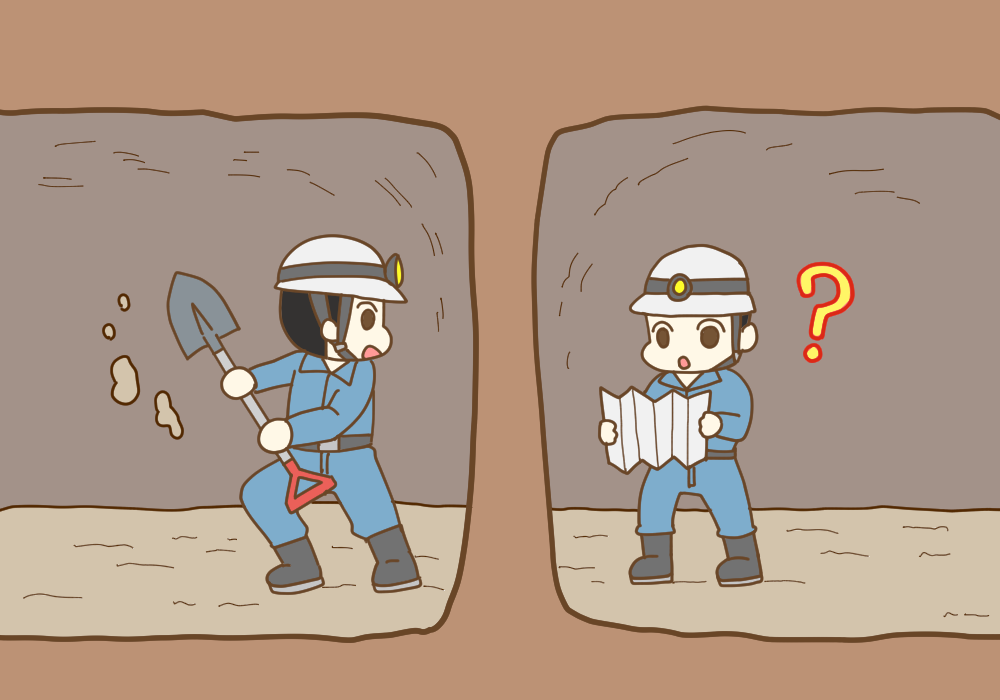
Tunnels are excavated in a precise direction by calculating the distance, direction and location through surveying, and adjusting them against the design drawings. Triangulation points for latitude, longitude and elevation, as well as benchmarks for height, are located throughout Japan. Based on the nearby triangulation points and benchmarks, reference points are set up at the tunnel portal for its survey. GPS and lasers are also used for the survey.
How to build a tunnelThe construction process
There are various methods of tunnel construction,
depending on the use and location.
The conventional tunnel method is for building tunnels
for roads and railroads through mountainous areas.
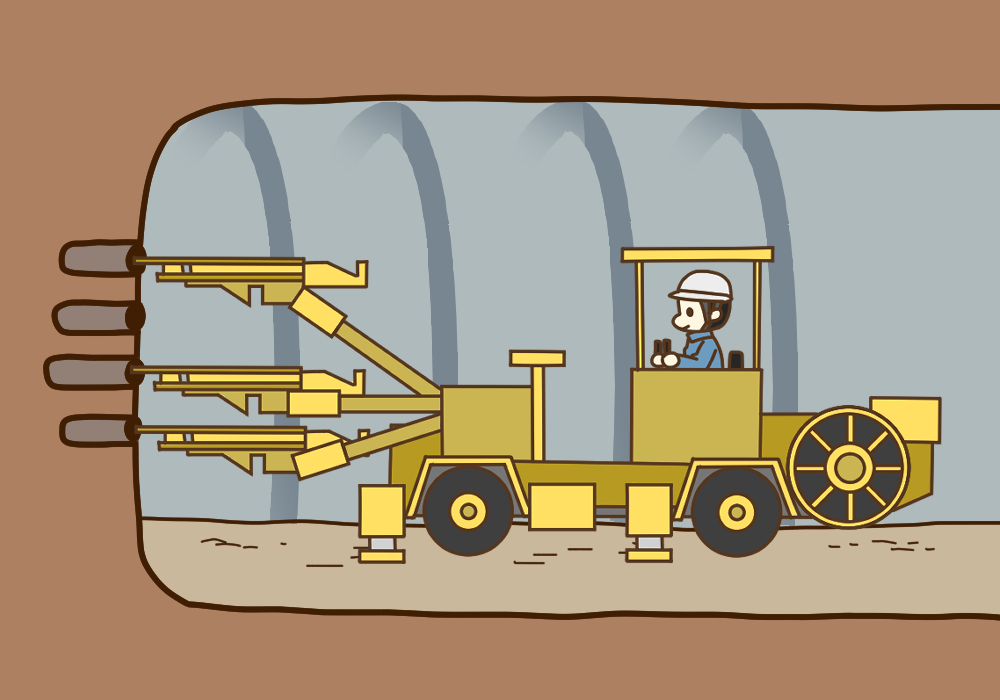
Drilling
A machine called a drill jumbo digs small holes for explosives.
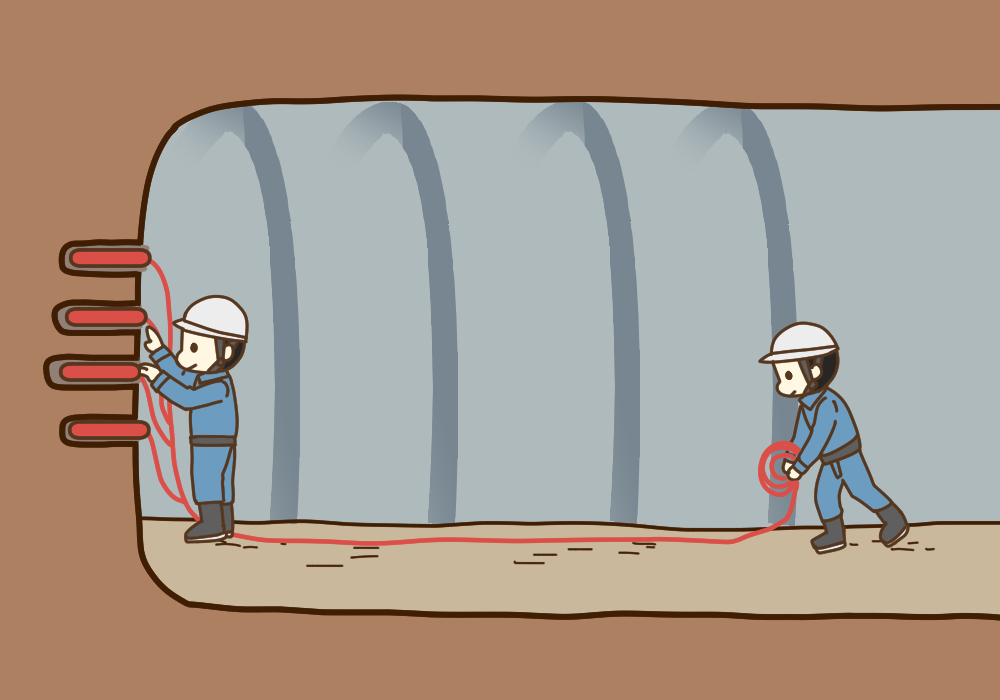
Charging explosives
Holes are filled with explosives.
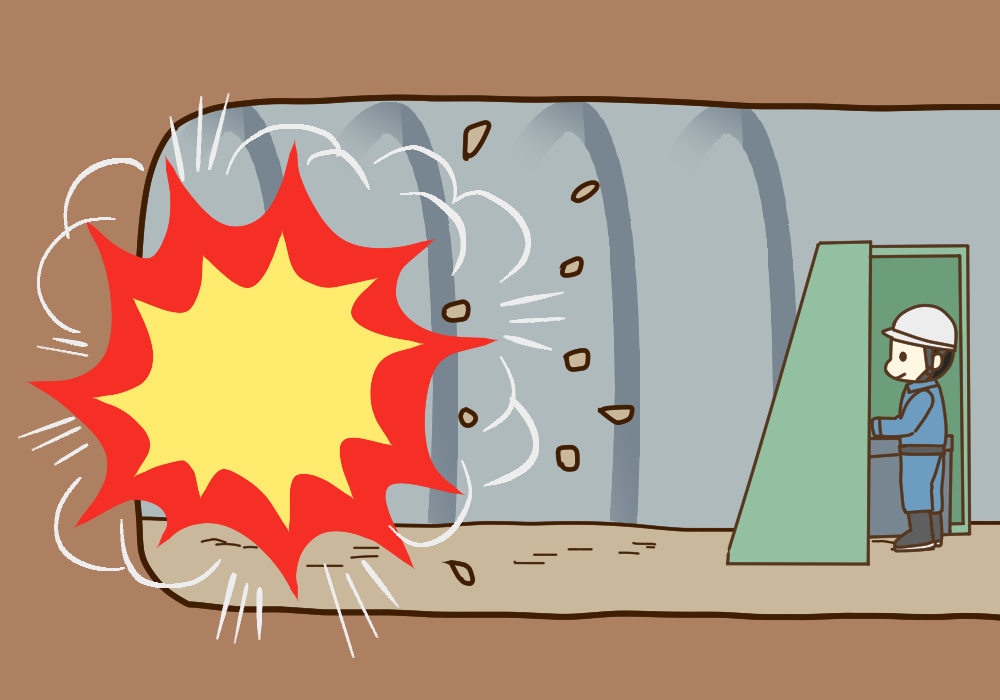
Blasting
The explosives are ignited and detonated to break the rocks into pieces.
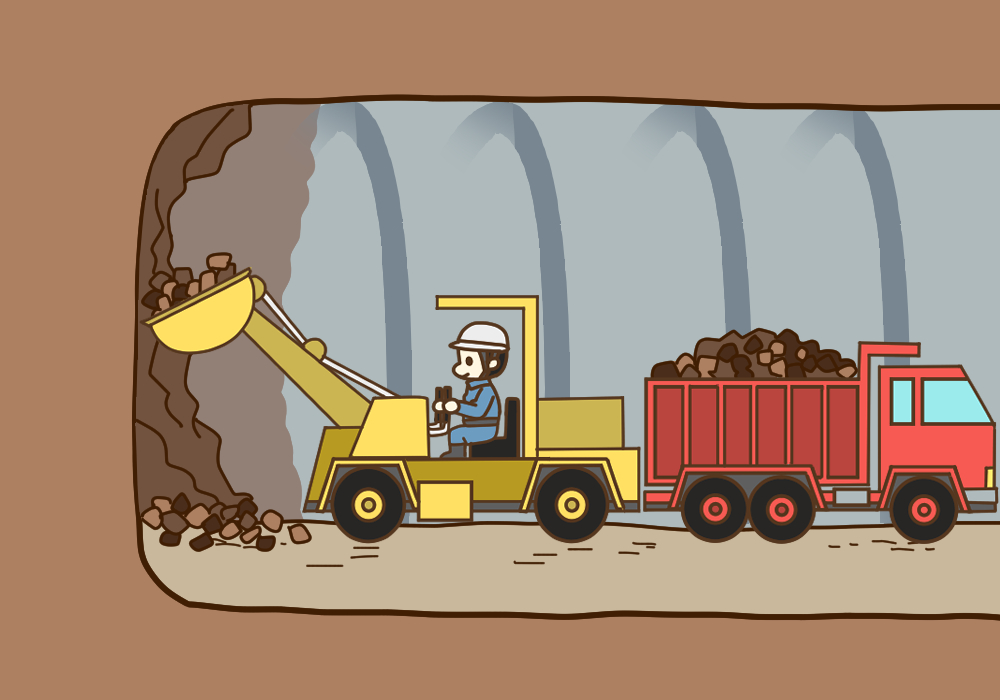
Mucking
The crushed rocks (muck) are transported out of the tunnel. A loader or mucker and a muck car or conveyor belt are used.
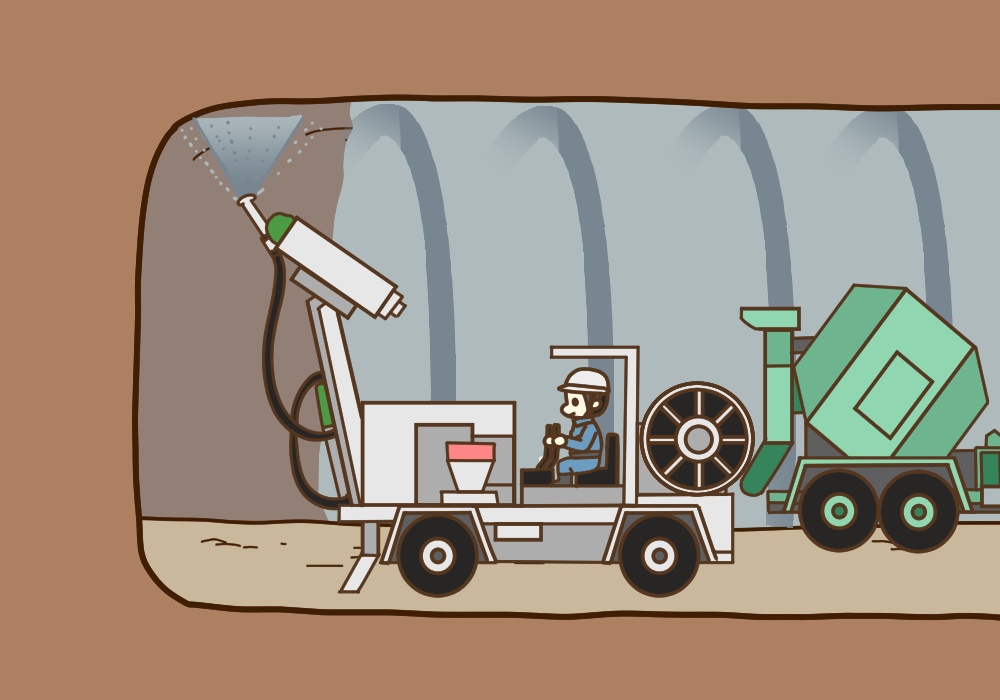
Spraying concrete
The tunnel is reinforced by spraying concrete (shotcrete).
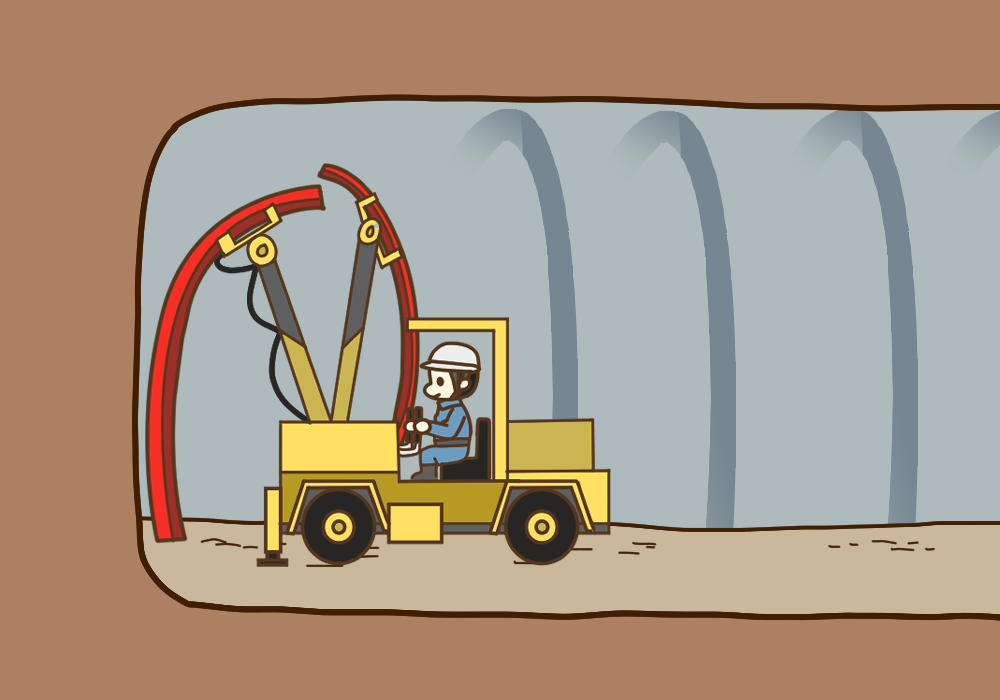
Installing support
Steel frames called steel supports are installed to prevent the tunnel collapse.
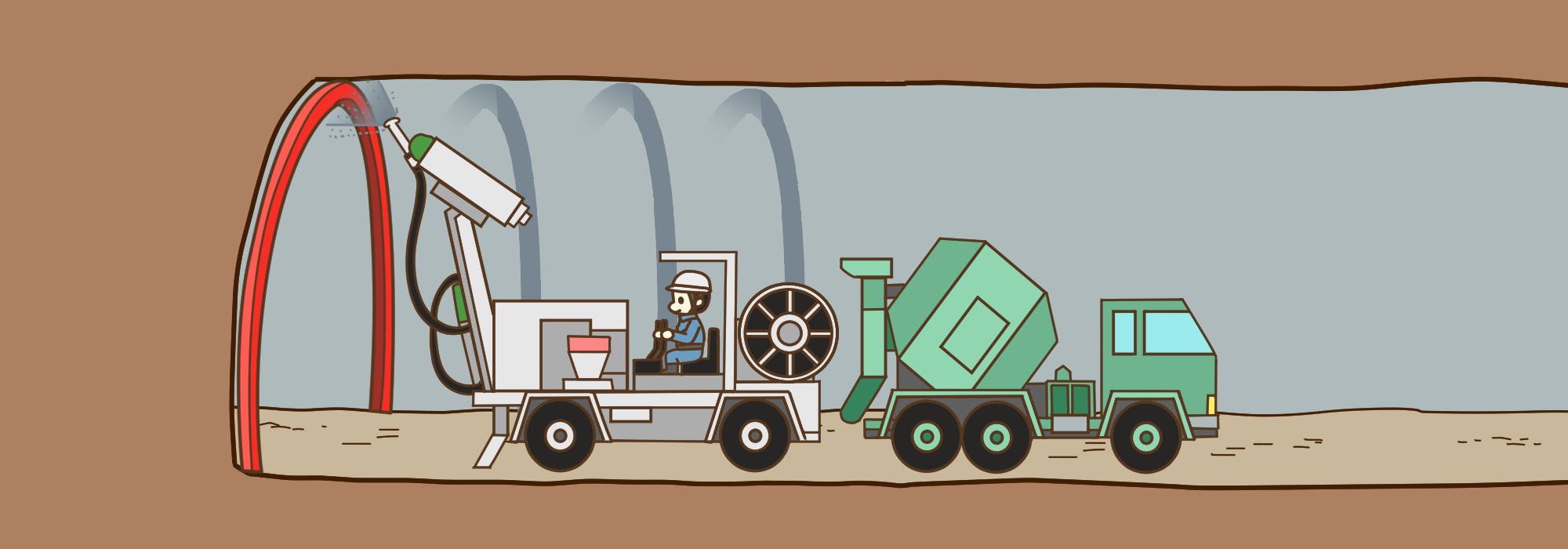
Spraying concrete
Concrete is sprayed again to make the wall surface 5-15cm thick.
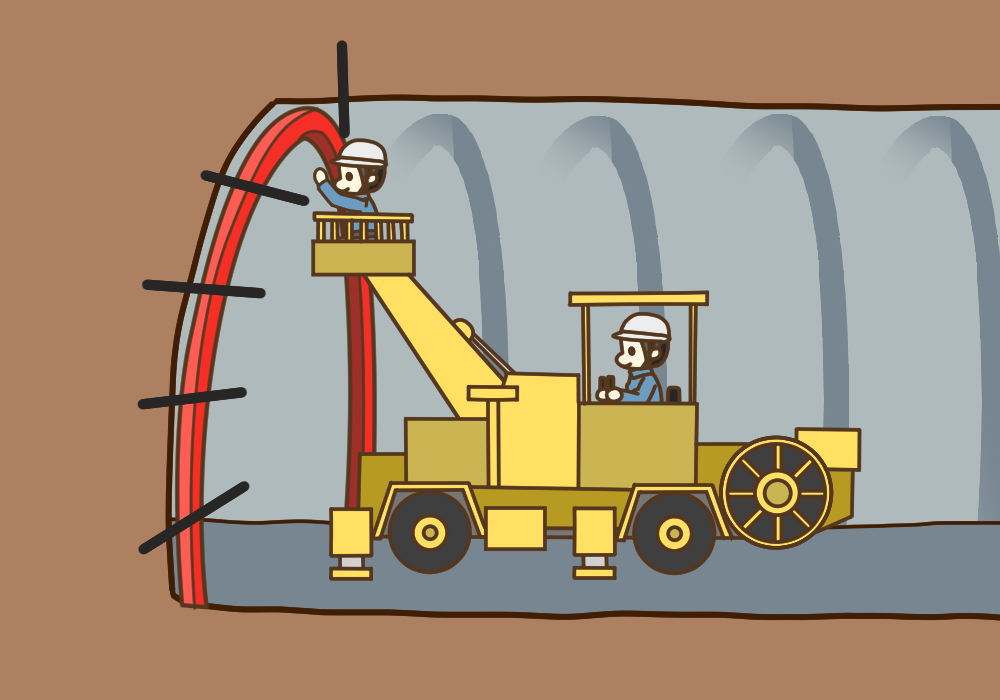
Installing rock bolts
Rock bolts (3 to 4 m-long steel rods) are placed radially between the support for reinforcement.
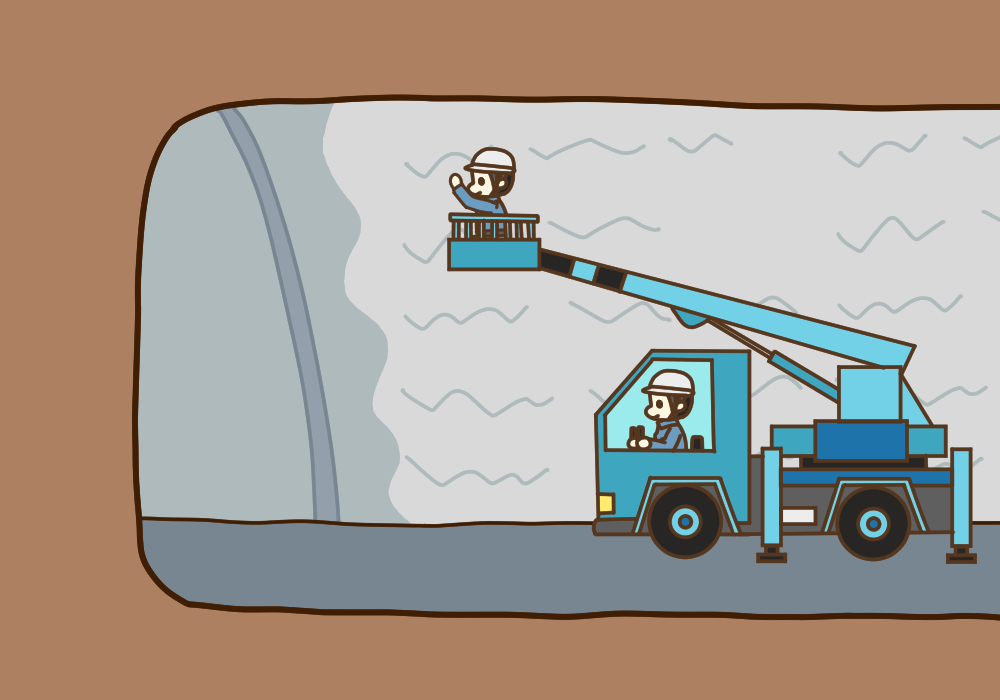
Waterproofing
proof membranes are put up to prevent water leaks into the tunnel.
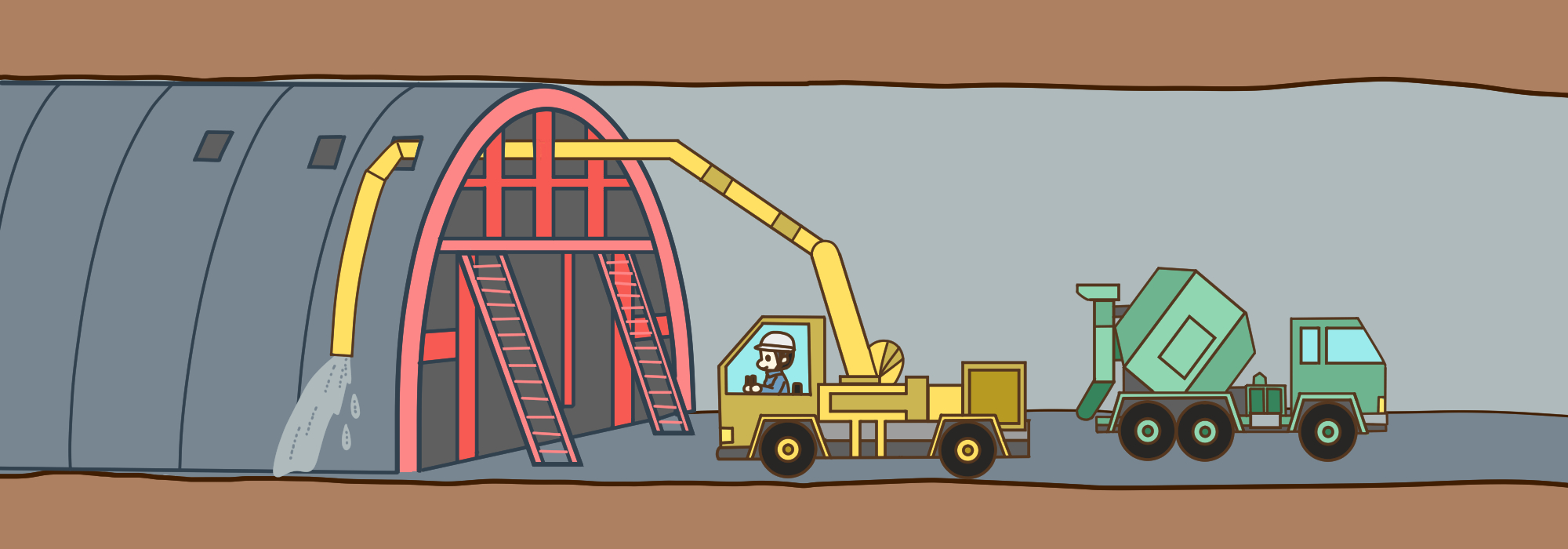
Concrete lining
placed inside the tunnel and concrete is poured between the form and the tunnel. When the concrete hardens, the form is removed and the finished surface is revealed.


